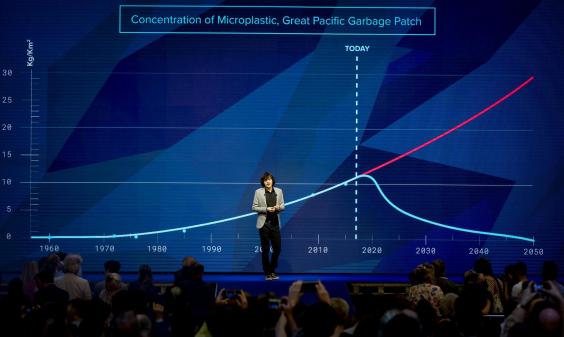The Ocean Cleanup system

The Ocean Cleanup is designing and developing the first feasible method to rid the world’s oceans of plastic. Every year, millions of tons of plastic enter the ocean. A significant percentage of this plastic drifts into large systems of circulating ocean currents, also known as gyres. Once trapped in a gyre, the plastic will break down into microplastics and become increasingly easier to mistake for food by sea life.
Going after it with vessels and nets would be costly, time-consuming, labor-intensive and lead to vast amounts of carbon emission and by-catch. That is why The Ocean Cleanup is developing a passive system, moving with the currents – just like the plastic – to catch it. The Ocean Cleanup’s passive system is comprised of a floater with a solid screen underneath, concentrating the debris and leading it to a collection system. The system is slowed down by a drift anchor suspended at an approximate depth of 600 meters, making the system move slower than the plastic and therefore catching it.
By deploying a fleet of systems, The Ocean Cleanup has estimated to be able to remove 50% of the Great Pacific Garbage Patch in just 5 years’ time. The concentrated plastic will be brought back to shore for recycling and sold to B2C companies. The revenue gained will help fund the cleanup expansion to the other four ocean gyres.
In preparation for full-scale deployment, The Ocean Cleanup organized several expeditions to map the plastic pollution problem in the Great Pacific Garbage Patch to an unprecedented degree of detail. The team simultaneously advanced its design through a series of scale model tests, including prototypes deployed in the North Sea 2016 and 2017. System trials off the American west coast will start early 2018 and the first cleanup system deployment in the Great Pacific Garbage Patch is scheduled to take place mid-2018.
To see the presentation of the system visit the link


 PT
PT ES
ES FR
FR